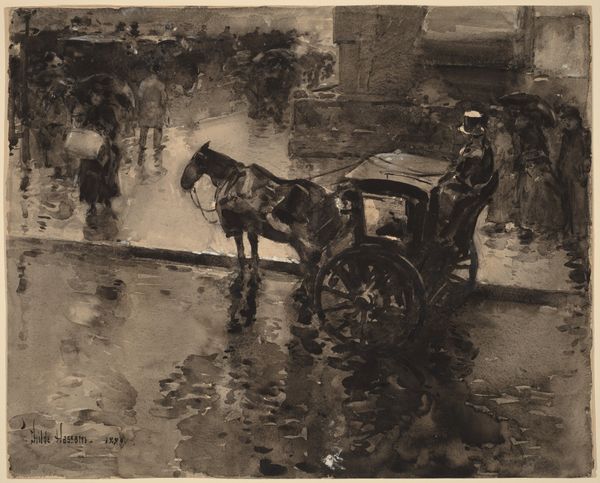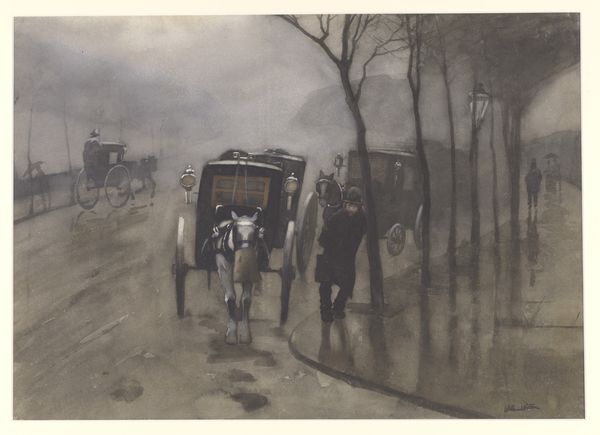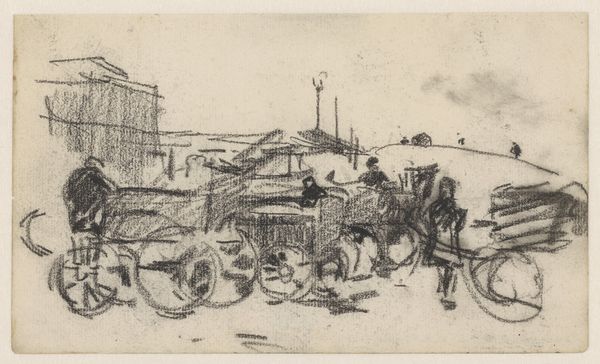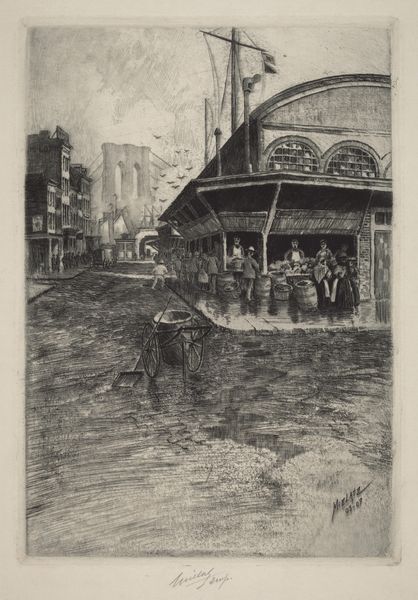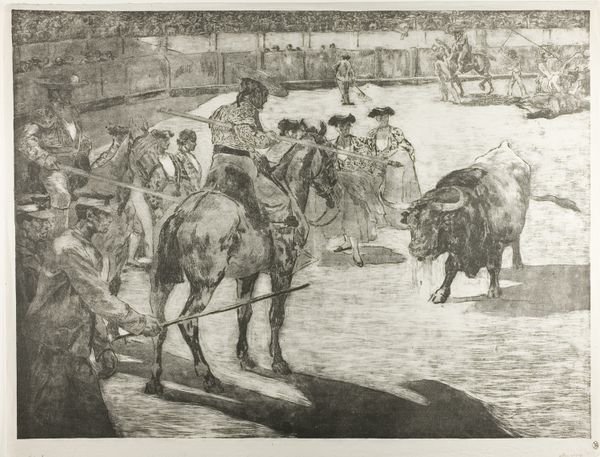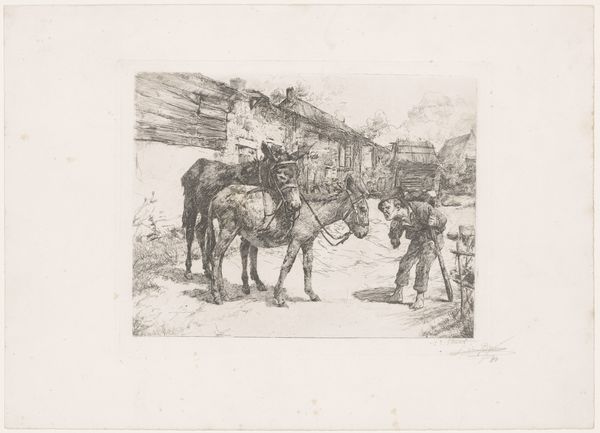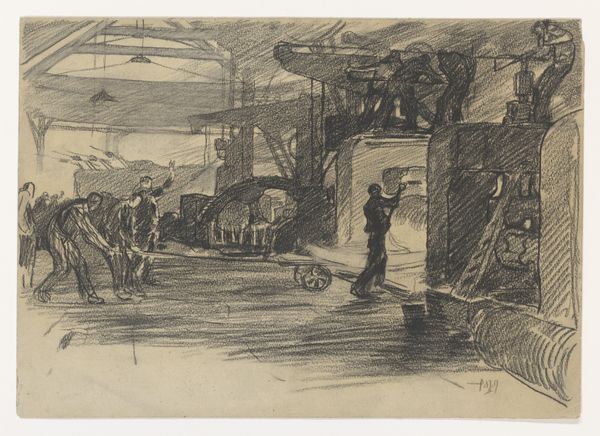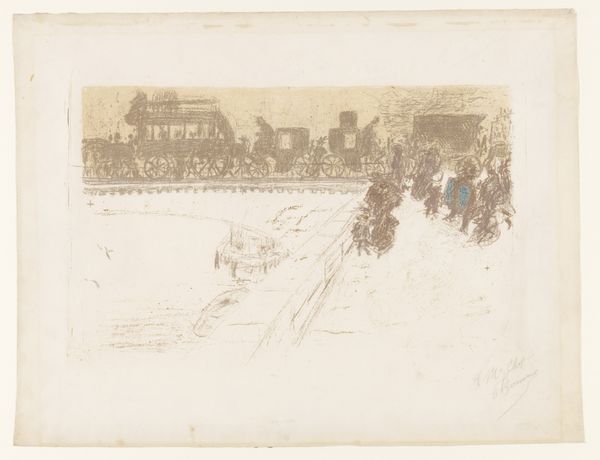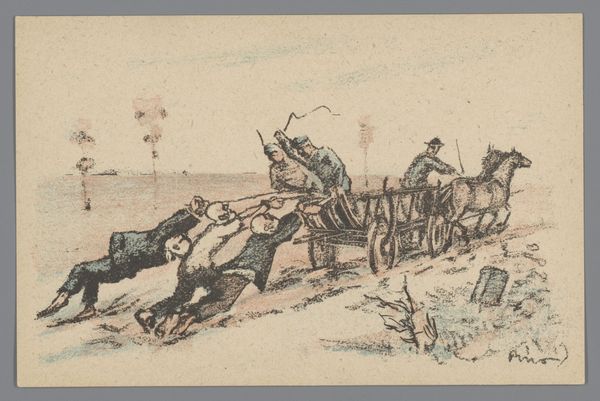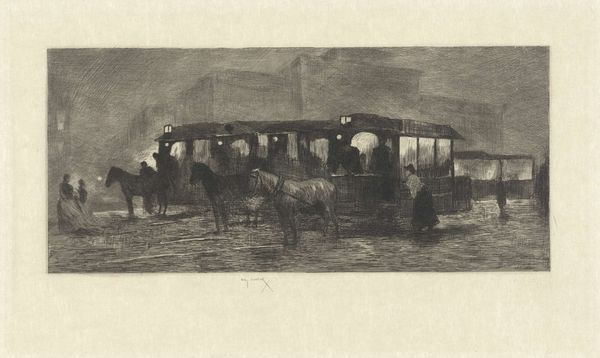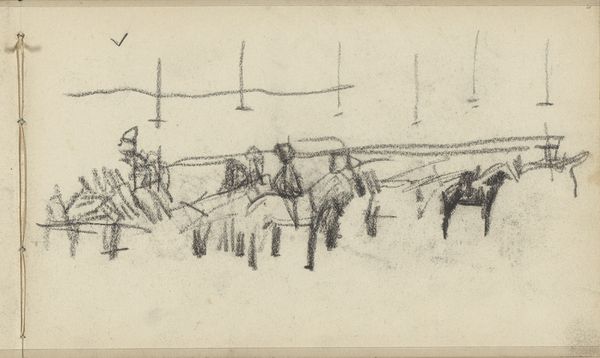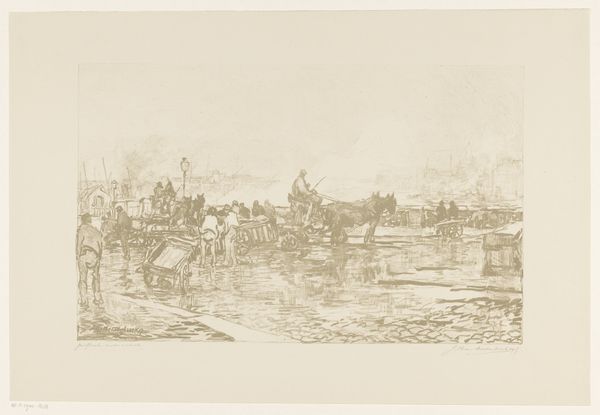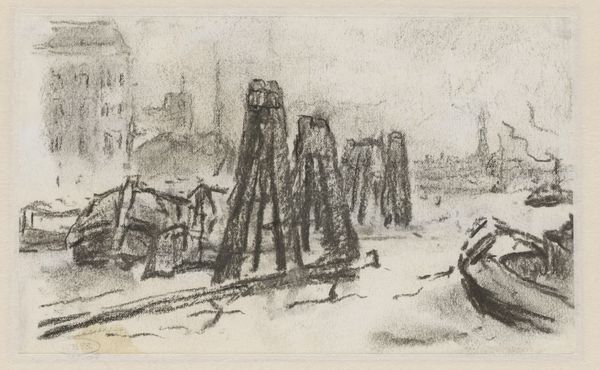
drawing, graphite
#
pencil drawn
#
drawing
#
impressionism
#
pencil sketch
#
landscape
#
charcoal drawing
#
pencil drawing
#
graphite
#
cityscape
Dimensions: height 293 mm, width 443 mm
Copyright: Rijks Museum: Open Domain
Curator: Here at the Rijksmuseum, we're standing before "Stadsplein in regen met rijtuigen"—City Square in Rain with Carriages—a graphite and pencil drawing created by Pieter de Josselin de Jong sometime between 1871 and 1906. Editor: Mmm, gray. Rain definitely comes across—makes you wanna find a warm cafe! Curator: It’s a striking image, even more so when you consider the historical context. De Josselin de Jong was working at a time of great social and technological change. City squares were hubs of activity, but also spaces governed by increasingly strict rules and regulations. This drawing captures a fleeting moment in that urban experience. Editor: Fleeting is right. Look how loose the lines are; how quickly he must have worked. The rain feels almost like static, blurring the figures. What are they thinking, these blurred people? Are they headed somewhere important, or just enduring? It feels melancholy, like a memory fading. Curator: Indeed. And the medium is key here: pencil and graphite. These are tools of immediacy, readily accessible. De Josselin de Jong is not making a grand, heroic statement, but rather recording a casual observation. The "ordinariness" of the cityscape—that's precisely the subject. And think about the development of photography at the time. Artists are released from the demand of hyper-realism; they can choose subjectivity. Editor: Absolutely, the freedom to *interpret* instead of just *copy*. The carriages—those black blobs looming—seem to dominate the square. Wealth, power…literally raining on everyone else! Though, maybe I'm just being cynical on a gray day myself! Curator: Perhaps! But that tension, that observation of social dynamics within public space, that is certainly something De Josselin de Jong and other artists of the period were acutely aware of. They saw the city changing and sought to understand how these shifts shaped social relations. The Impressionistic technique perfectly captures this evolving reality, open to multiple, personal viewpoints. Editor: Right. Makes me wonder what he'd make of our city squares today. Maybe just as much hustle and bustle…and just as many shades of gray! Curator: A thought. Perhaps his quick impressions also urge us to think about our modern public spaces with the same careful eye and attention.
Comments
No comments
Be the first to comment and join the conversation on the ultimate creative platform.
